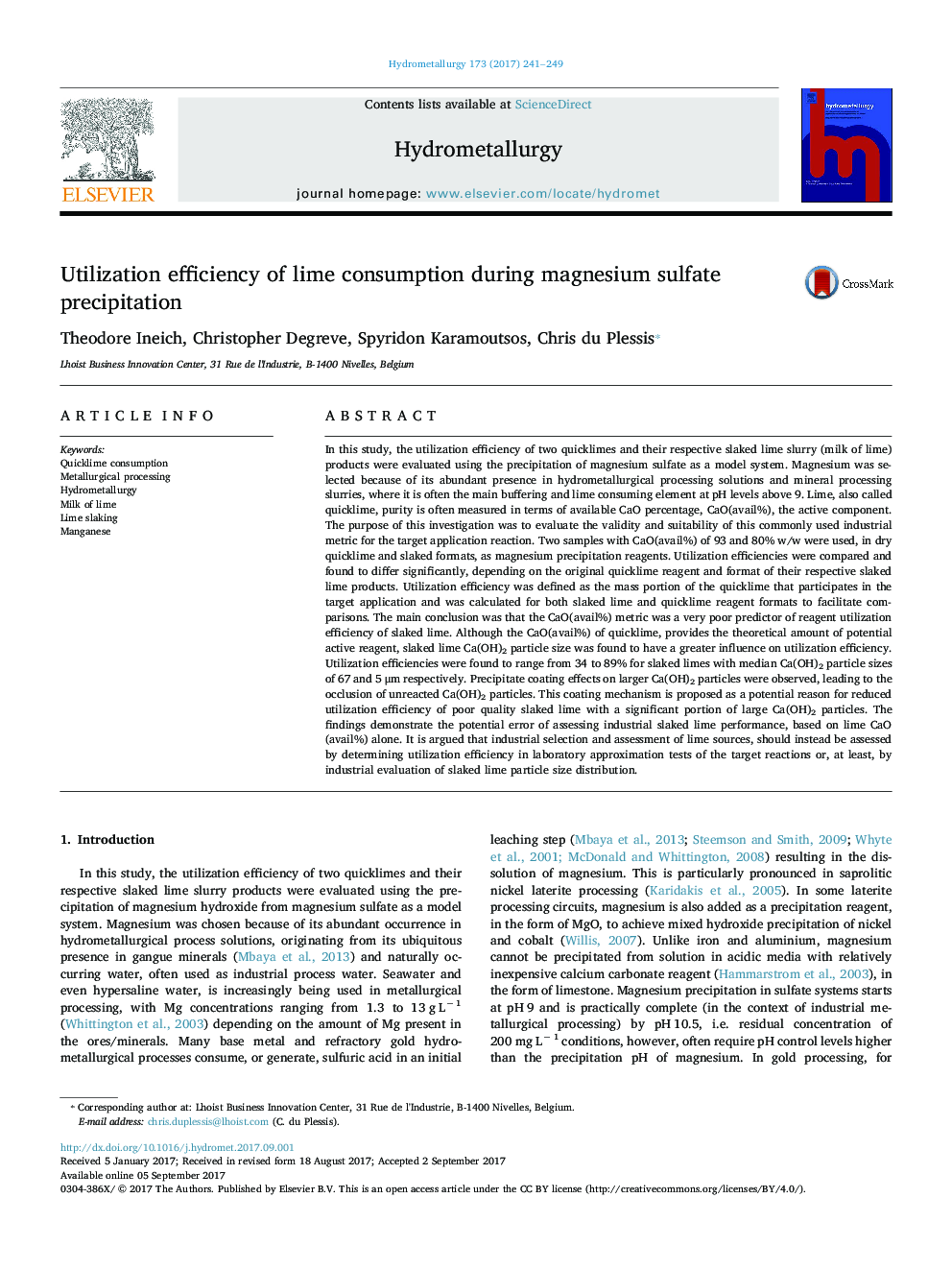| کد مقاله | کد نشریه | سال انتشار | مقاله انگلیسی | نسخه تمام متن |
|---|---|---|---|---|
| 6476791 | 1425531 | 2017 | 9 صفحه PDF | دانلود رایگان |
- Significant differences in lime utilization efficiency were observed between different quicklimes and their respective slaked lime products.
- The commonly used industrial metric of “available CaO” was found to be an inadequate predictor of utilization efficiency.
- Slaked lime Ca(OH)2 particle size was found to have a greater influence on utilization efficiency than “available CaO” of quicklime alone.
- Precipitate coating on larger Ca(OH)2 particles were observed, leading to the occlusion of unreacted Ca(OH)2.
In this study, the utilization efficiency of two quicklimes and their respective slaked lime slurry (milk of lime) products were evaluated using the precipitation of magnesium sulfate as a model system. Magnesium was selected because of its abundant presence in hydrometallurgical processing solutions and mineral processing slurries, where it is often the main buffering and lime consuming element at pH levels above 9. Lime, also called quicklime, purity is often measured in terms of available CaO percentage, CaO(avail%), the active component. The purpose of this investigation was to evaluate the validity and suitability of this commonly used industrial metric for the target application reaction. Two samples with CaO(avail%) of 93 and 80% w/w were used, in dry quicklime and slaked formats, as magnesium precipitation reagents. Utilization efficiencies were compared and found to differ significantly, depending on the original quicklime reagent and format of their respective slaked lime products. Utilization efficiency was defined as the mass portion of the quicklime that participates in the target application and was calculated for both slaked lime and quicklime reagent formats to facilitate comparisons. The main conclusion was that the CaO(avail%) metric was a very poor predictor of reagent utilization efficiency of slaked lime. Although the CaO(avail%) of quicklime, provides the theoretical amount of potential active reagent, slaked lime Ca(OH)2 particle size was found to have a greater influence on utilization efficiency. Utilization efficiencies were found to range from 34 to 89% for slaked limes with median Ca(OH)2 particle sizes of 67 and 5 μm respectively. Precipitate coating effects on larger Ca(OH)2 particles were observed, leading to the occlusion of unreacted Ca(OH)2 particles. This coating mechanism is proposed as a potential reason for reduced utilization efficiency of poor quality slaked lime with a significant portion of large Ca(OH)2 particles. The findings demonstrate the potential error of assessing industrial slaked lime performance, based on lime CaO(avail%) alone. It is argued that industrial selection and assessment of lime sources, should instead be assessed by determining utilization efficiency in laboratory approximation tests of the target reactions or, at least, by industrial evaluation of slaked lime particle size distribution.
572
Journal: Hydrometallurgy - Volume 173, November 2017, Pages 241-249
